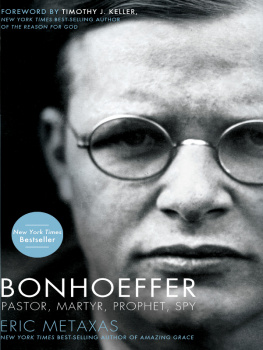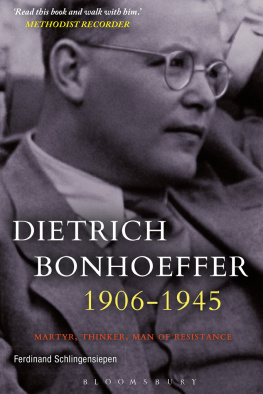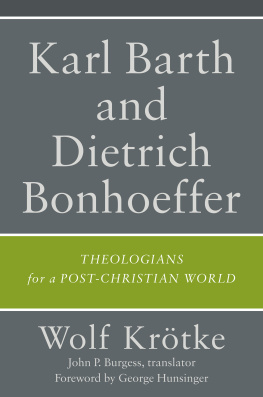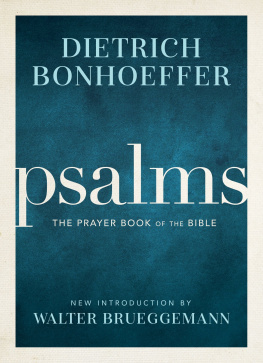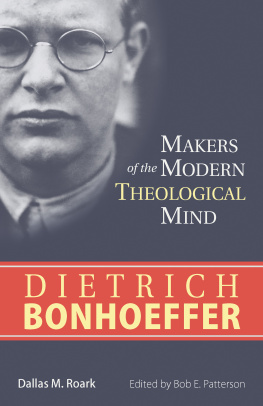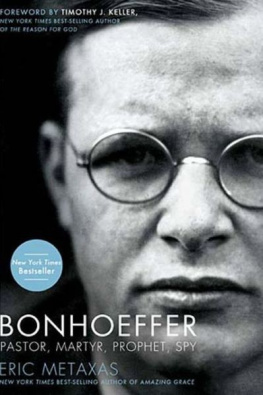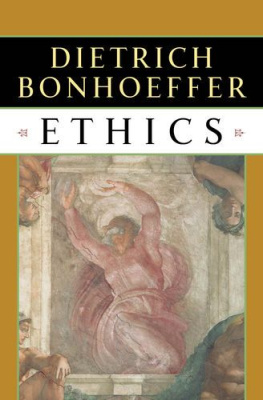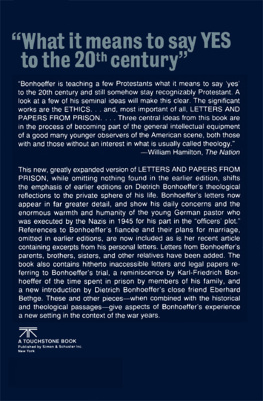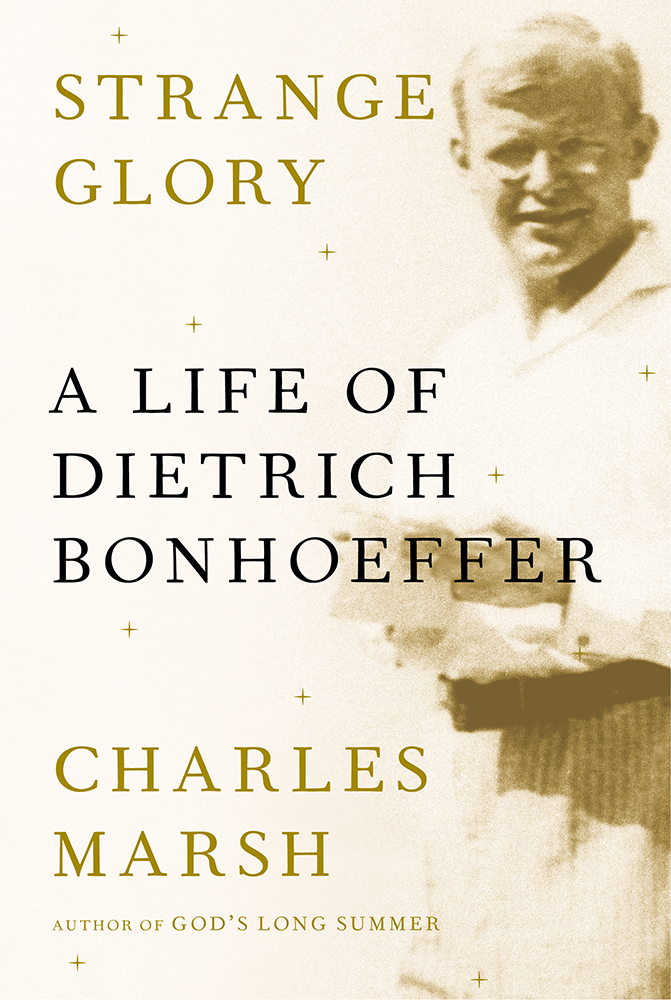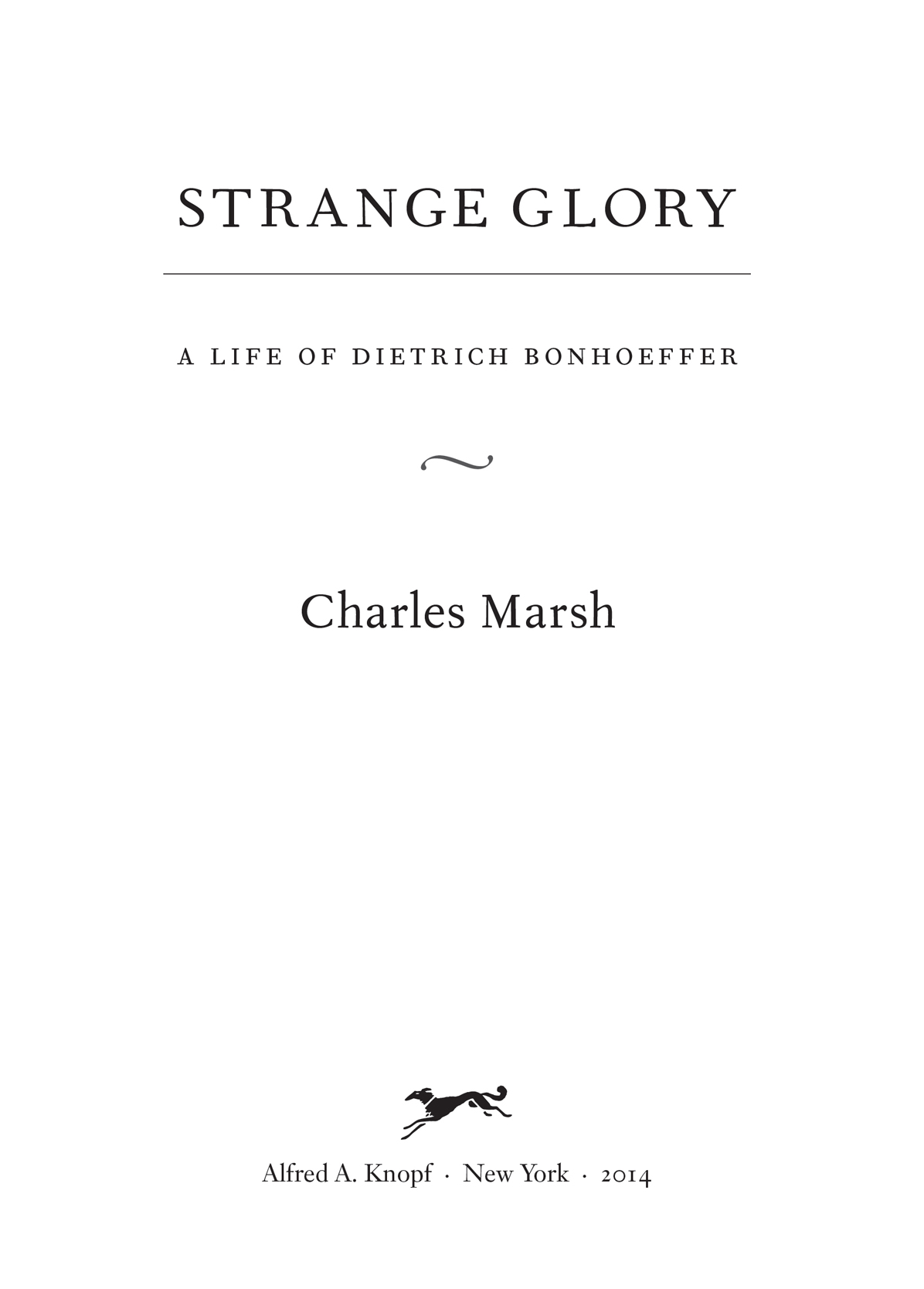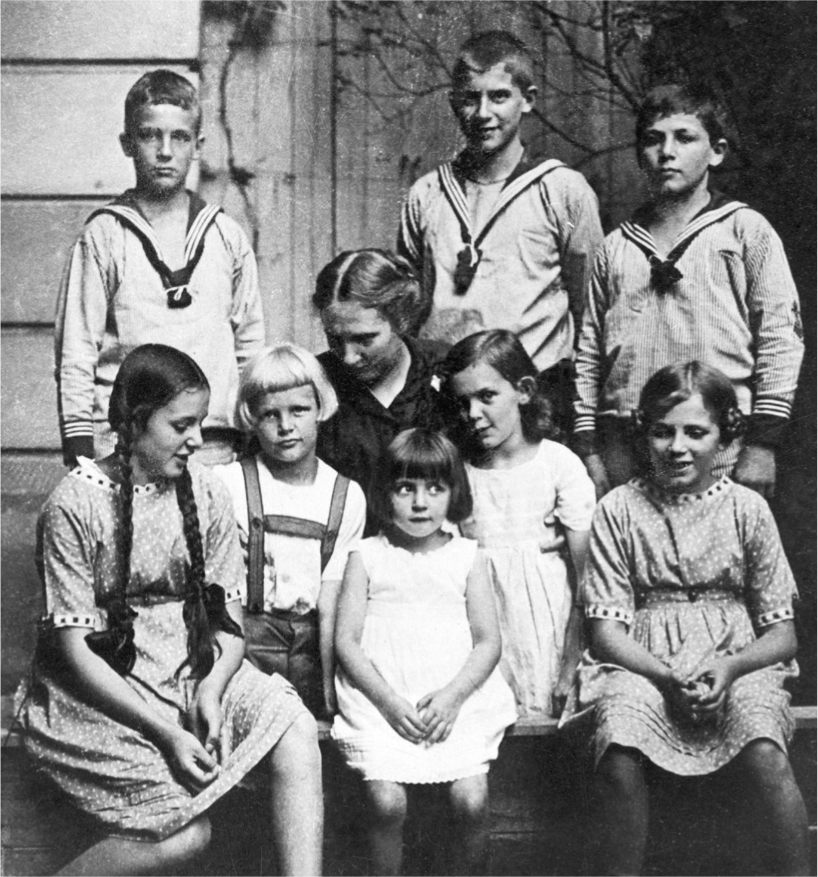THIS IS A BORZOI BOOK
PUBLISHED BY ALFRED A. KNOPF
Copyright 2014 by Charles Marsh
All rights reserved. Published in the United States by Alfred A. Knopf, a division of Random House LLC, New York, and in Canada by Random House of Canada Limited, Toronto, Penguin Random House companies.
www.aaknopf.com
Knopf, Borzoi Books, and the colophon are registered trademarks of Random House LLC.
Library of Congress Cataloging-in-Publication Data
Marsh, Charles, [date]
Strange glory / by Charles Marsh. First Edition.
pages cm
Includes bibliographical references and index.
ISBN 978-0-307-26981-2 (hardcover) ISBN 978-0-385-35169-0 (ebook) ISBN 978-0-307-39038-7 (trade pbk.)
1. Bonhoeffer, Dietrich, 19061945. I. Title.
BX4827.B57M37 2014
230.044092dc23
[B]
2013045873
Jacket image: Dietrich Bonhoeffer during the meeting of the Management Committee of the World Alliance in Geneva, Switzerland, August 1932. bpk, Berlin / Staatsbibliothek zu Berlin, Stiftung Preussischer Kulturbesitz / Art Resource, N.Y.
Jacket design by Stephanie Ross
v3.1
FOR KAREN
It is a strange glory, the glory of this God.
Dietrich Bonhoeffer, London Sermon, 1933
CONTENTS
~
CHAPTER ONE
Eternitys Child
CHAPTER TWO
Italy Is Simply Inexhaustible
CHAPTER THREE
University Studies
CHAPTER FOUR
Greetings from the Matador
CHAPTER FIVE
Covered in the Moss of Tradition
CHAPTER SIX
I Heard the Gospel Preached in the Negro Churches
CHAPTER SEVEN
Under the Constraint of Grace
CHAPTER EIGHT
Theological Storm Troopers on the March
CHAPTER NINE
Crying in the Wilderness
CHAPTER TEN
A New Kind of Monasticism
CHAPTER ELEVEN
I Must Be a Sojourner and a Stranger
CHAPTER TWELVE
Christmas amid the Ruins
CHAPTER THIRTEEN
Killing the Madman
CHAPTER FOURTEEN
The Greatest of Feasts on the Journey to Freedom
CHAPTER ONE
19061923
~
Eternitys Child
W hen he was a young child, and his family rented a sprawling villa near the university clinics in
Eternity. Ewigkeit.
Sabine found the word very long and gruesome. Dietrich found it majestic: an awesome word, he called it.
Sometimes he would picture himself on his deathbed, surrounded by family and friends, reclining on the threshold of heaven. He knew what his last words would be and sometimes rehearsed them aloud, though he dared not reveal them to anyone.
When the twins got separate bedrooms they devised a code for keeping up their metaphysical games. Dietrich would drum lightly on the wall with his fingers, an admonitory knock announcing that it was time once again to ponder eternity. A further tap signaled a new reflection on the
Dietrich believed the nightly ritual spared him from being devoured by
U nlike most Protestant theologians of the twentieth century, G. W. F. Hegel. His wishes were most often granted.
DIETRICH AND SABINE BONHOEFFER IN 1914
The family lived at 9 Birkenwldchen Strasse in the affluent Breslau suburb of
With its thick walls, narrow windows, and piercing spires, the house stood on the eastern bank of the Alte Oder, off a cobblestone street abutting another narrow wood. Arches and corbels enlivened the brickwork, and touches of Gothic-Baroque appeared in the finials, overhangs, and trussing. A hipped roof and screened-in porch entry, with deep eaves and dormer and eyebrow windows, gave the impression of a Low German farmhouse extending whimsically in every direction.
But for the rose arbor and a small vegetable garden, both carefully tended, the backyard was left to grow wild, according to fashion. Hens and roosters skittered about the yard and across the aging tennis court. Goats and sheep roamed freely in and out of the stables and even into the house when the doors were left open. Dietrichs mother kept a childrens zoo with rabbits, guinea pigs, turtledoves, and squirrels, a terrarium with lizards, and snakes, and collections of birds eggs and mounted beetles and butterflies. In the shade of a linden tree, Dietrichs father and older brothers built a tree house on dark piers, a latticework affair with a small stage for skits. One summer, Dietrich helped those same older siblings dig an underground passageway from the arbor to a boulder. Beyond the familys three acres lay what the neighborhood children called the wilderness. There the land rolled softy toward the river and into a bog where they collected algae, worms, lizards,
PAULA BONHOEFFER AND HER SEVEN CHILDREN
Word that the family was moving to
At first, the family rented a place on the Brckenallee, a street that no longer exists, near the Tiergarten, the former royal hunting estate that had become a public park, where Dietrich and Sabine might see the kaisers children also at play. Four years later, Dr. Bonhoeffer purchased a three-story Grnderzeit-Villa in
The Bonhoeffers warmed to their new home at 14 Wangenheimstrasse. Though smaller than their rented Breslau villa, the house was elegant and lean, built in the style of a classic German country home, with a hip, shingled roof, a bow front dormer, and a clinker brick face on the basement socle. There was also a deep yard, a large veranda facing the garden, and an office suite for Dr. Bonhoeffers home clinic.
Inside, the plain cedar floors, crafted to the highest German standards, were well worn. A thick, plaited mat covered the parquet floor in the front hall, there being no need, as the lady of the house, Paula Bonhoeffer, saw it, for children to run across Persian rugs before they knew how to keep their shoes clean. The appointments were simple and sturdy throughout, made to last of top-quality wood and fittings. Beyond the foyer was an enormous living room (twenty meters wide, twenty-five meters deep) that the Bonhoeffer family called simply das Zimmer, the room, or, if necessary, dasgrosse Zimmer, the big room, but never der Salon, the parlor, which to Paulas ear sounded pretentious. A massive dining table, the wood engraved on all sides, could comfortably seat a dozen in chairs of dark Bavarian timber. On the sideboard, Julie Tafel Bonhoeffer, the childrens grandmother, who lived in Tbingen until moving to Berlin with her housekeeper in 1925, kept an antique silver box from which she occasionally drew pieces of chocolate to treat the little ones.


